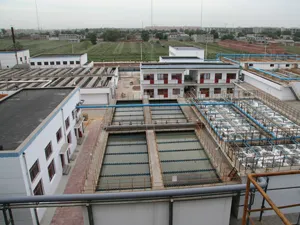Types of Coagulants in Water Treatment
Water treatment is a critical process aimed at making water safe for human consumption and environmental discharge. One of the crucial stages in this process is coagulation, where certain chemicals, known as coagulants, are added to water to remove suspended solids. Coagulation helps in the aggregation of particles, allowing them to settle out of the water more efficiently. This article explores the various types of coagulants used in water treatment, their functions, and implications for water quality.
1. Aluminum Salts
Aluminum-based coagulants, particularly aluminum sulfate (alum), are the most widely used in water treatment. When added to water, alum dissociates to form aluminum ions, which react with dissolved organic matter and other particles, leading to the formation of larger aggregates or flocs. These flocs can then be more readily removed by sedimentation or filtration. While effective, the use of aluminum salts can result in residual aluminum in treated water, which has raised health concerns over the years. However, proper dosing and treatment practices help mitigate these risks.
2. Iron Salts
Iron salts, such as ferric sulfate and ferrous sulfate, are alternative coagulants used alongside or in place of aluminum salts. Like aluminum, iron ions promote the formation of flocs, but they tend to be more effective in removing certain types of color and organic matter. Iron salts can also contribute to the control of phosphorus in wastewater treatment, making them a valuable option in specific scenarios. However, they are less desirable in drinking water treatment due to the potential for staining and the formation of sludge, which requires careful management.
types of coagulants in water treatment pdf

3. Synthetic Polymers
Synthetic organic polymers, also known as polyacrylamides, have gained popularity in recent years due to their effectiveness at low dosages and ability to form large, stable flocs. These coagulants can be cationic, anionic, or nonionic, depending on their charge characteristics. They are particularly advantageous in treating water with high levels of suspended solids or when dealing with non-traditional contaminants. While synthetic polymers improve floc formation and settling, they may also introduce organic compounds into the water, necessitating thorough evaluation for health and environmental impacts.
4. Natural Coagulants
Natural coagulants derived from plants or animals, such as Moringa oleifera seeds, have garnered attention due to their eco-friendly nature. These coagulants function by charging and destabilizing suspended particles, leading to floc formation. Their use is particularly beneficial in rural or developing regions where chemical coagulants may be less accessible. While natural coagulants can be effective, their efficiency varies significantly based on various factors, including water pH and turbidity levels.
Conclusion
The selection of an appropriate coagulant in water treatment is critical for ensuring effective removal of contaminants and meeting water quality standards. Each type of coagulant—whether aluminum salts, iron salts, synthetic polymers, or natural coagulants—offers unique advantages and challenges. The ongoing research and development in coagulants continue to enhance water treatment processes, aiming for improved safety and efficiency. As we advance, the focus on sustainable and eco-friendly coagulants will likely shape the future landscape of water treatment technologies.

